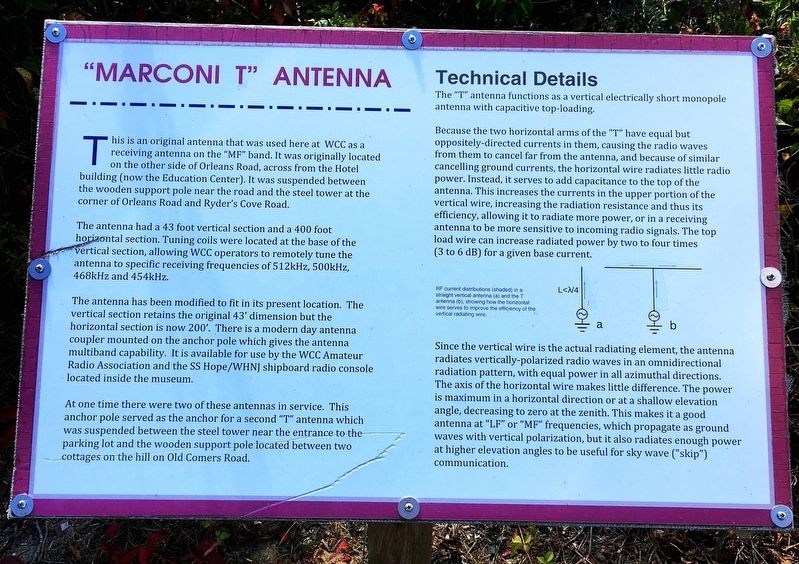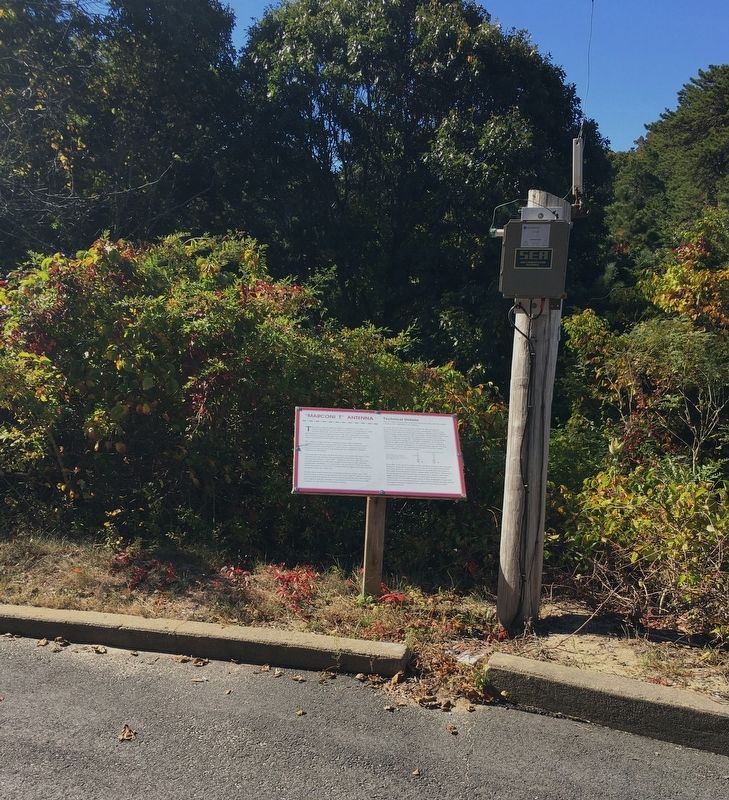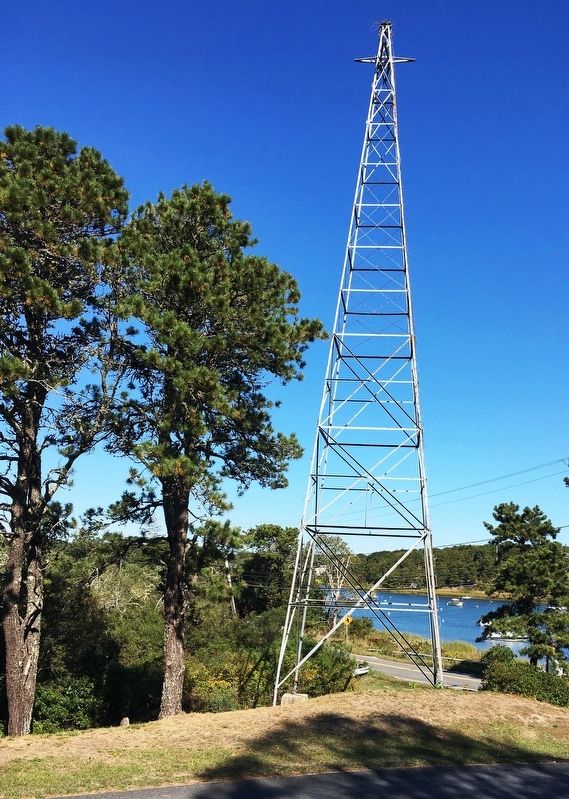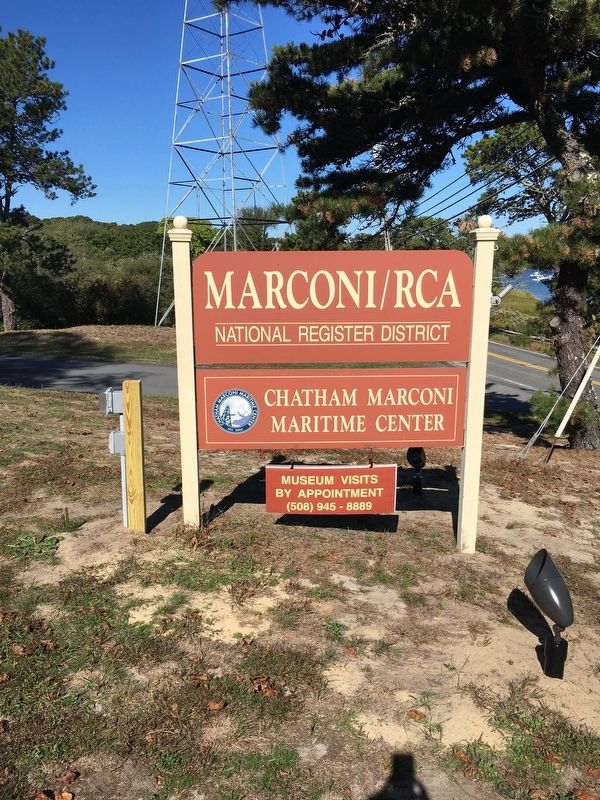Chatham in Barnstable County, Massachusetts — The American Northeast (New England)
“Marconi T” Antenna
Chatham Marconi Maritime Center
This is an original antenna that was used here at the WCC as a receiving antenna on the “MF” band. It was originally located on the other side of Orleans Road, across from the Hotel Building (now the Education Center). It was suspended between the wooden support pole near the road and the steel tower at the corner of Orleans Road and Ryder’s Cove Road.
The antenna had a 43 foot vertical section and a 400 foot horizontal section. Tuning coils were located at the base of the vertical section, allowing the WWC operators to remotely tune the antenna to specific receiving frequencies of 512kHz, 500kHz, 468kHz and 454kHz.
The antenna has been modified to fit its present location. The vertical section retains the original 43’ dimension but the horizontal section is now 200’. There is a modern day antenna coupler mounted on the anchor pole which gives the antenna multiband capability. It is available for use by the WCC Amateur Radio Association and the SS Hope/WHNJ shipboard radio console located inside the museum.
At one time there were two of these antennas in service. This anchor pole served as the anchor for the second “T” antenna which was suspended between the steel tower near the entrance to the parking lot and the wooden support pole located between two cottages on the hill on Old Comers Road.
Technical Details
The “T” antenna functions as a vertical electrically short monopole antenna with capacitive top-loading.
Because the two horizontal arms of the “T” have equal but oppositely-directed currents in them, causing the radio waves from them to cancel far from the antenna, and because of similar cancelling ground currents, the horizontal wire radiates little radio power. Instead it serves to add capacitance to the top of the vertical wire, increasing the radiation resistance and thus its efficiency, allowing it to radiate more power, on in a receiving antenna to be more sensitive to incoming radio signals. The top load wire can increase radiated power by two to four times [3 to 6 db] for a given base current.
Since the vertical wire is the actual radiating element, the antenna radiates vertically-polarized radio waves in an omnidirectional radiation pattern, with equal power in all azimuthal directions. The axis of the horizontal wire makes little difference. The power is maximum in a horizontal direction or at a shallow elevation angle, decreasing to zero at the zenith. This makes it a good antenna at “LF” or “MF” frequencies, which propagate as ground waves with vertical polarization angles to be useful for sky wave [”skip”] communication.
Erected by Chatham Marconi Maritime Center.
Topics. This historical marker is listed in this topic list: Communications.
Location. 41° 42.212′ N, 69° 58.814′ W. Marker is in Chatham, Massachusetts, in Barnstable County. Marker can be reached from Orleans Road (Massachusetts Route 28) 0.1 miles west of Old Comers Road. The marker is located within the Chatham Marconi Maritime Center, behind the Residence Building. Touch for map. Marker is at or near this postal address: 831 Orleans Road, Chatham MA 02633, United States of America. Touch for directions.
Other nearby markers. At least 8 other markers are within walking distance of this marker. Employee Residence (within shouting distance of this marker); Chatham Radio/WCC (within shouting distance of this marker); The 1914 Marconi Radio Station Complex (within shouting distance of this marker); Operations Building (within shouting distance of this marker); Antenna Trail Exhibits (within shouting distance of this marker); Historic Receiving Antennas (about 400 feet away, measured in a direct line); Aerial View of the Marconi-RCA Complex, circa 1930 (about 600 feet away); The Nickerson Family (approx. half a mile away). Touch for a list and map of all markers in Chatham.
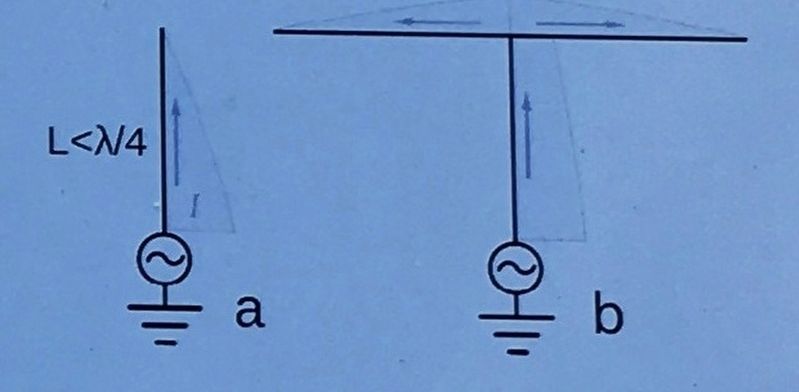
Photographed By Brandon D Cross, October 4, 2020
3. Photo Insert: vertical antenna (a) and T antenna (b) diagram
RF current distributions (shaded) in a straight vertical antenna (a) and the T antenna (b), showing how the horizontal wire serves to improve the efficiency of the vertical radiating wire.
Credits. This page was last revised on November 6, 2020. It was originally submitted on November 6, 2020, by Brandon D Cross of Flagler Beach, Florida. This page has been viewed 594 times since then and 51 times this year. Photos: 1, 2, 3, 4, 5. submitted on November 6, 2020, by Brandon D Cross of Flagler Beach, Florida. • J. Makali Bruton was the editor who published this page.
